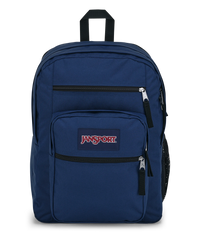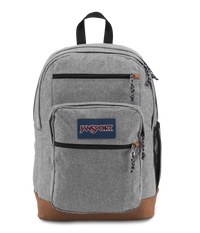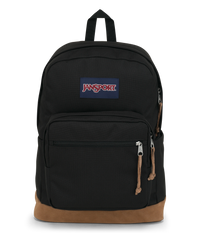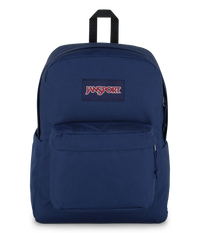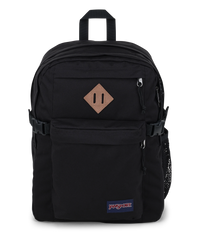A Space-Inspired Backpack That’s Out Of This World
Have you ever looked up at the stars and spotted the Big Dipper or Pegasus constellations?
Stargazing from home is fun, but did you know you can see stars and galaxies that are even further away with the help of NASA’s James Webb Space Telescope? Taking images of distant worlds to help us unlock the mysteries of the universe, it may sound like something from a sci-fi movie, but it’s real.
The James Webb Space Telescope launched on Christmas 2021 and has transmitted some of the most ground-breaking and exciting images the world has ever seen. To celebrate this incredible achievement and the incredible imagery it’s capturing, JanSport’s new Space and Time collection features an image taken by the telescope. It’s a picture of the galaxy cluster SMACS 0723, and the thrilling twist is that it’s what it looked like 4.6 billion years ago. Light traveling from these galaxy clusters has to journey through vast amounts of space and time before they reach our planet—so by the time they reach us, they’re already billions of years old.
Meet the Space and Time Backpacks
More beautiful than anything you can see through your regular star-gazing, the image features specks of orange with bright blue stars and blurred white stars on a black backdrop. And, just looking at these packs is like traveling through space. Whether on your Lunch Break or Suede Campus (—why not rock both?), this mesmerizing print will be an endless talking point for you and your friends, plus it looks super cool too.
Easily paired with your low-key outfits for day, or even a stylish pop for evenings out, this collection is perfect if you’re in classes all day and don’t have time to go home. Plus, if your backpack personality is in the unique and unusual camp, and you love astrology and astronomy, this is the pack for you.
The Inspiration Behind the Space and Time Collection
You might be wondering, how on earth it’s possible to take an image like this of subject matter that’s so far away. Well, the Webb telescope is the largest telescope using a near-infrared camera—which means it can take pictures not seen by the naked eye. The insanely high-tech camera is equipped to capture images that are tiny and light years away. It also has a Mid-Infrared Instrument—known as MIRI, which captures all those vivid colors you see on the collection.
Another fun fact is that the image on the collection isn’t just one picture. It’s a combination of pictures that were taken over 12.5 hours and put together. Getting all the photos needed to get this one image took weeks. And, to make things even more crazy, this image is of an area that’s actually only the size of a grain of sand, magnified. It’s a tiny part of a massive universe. Are you impressed yet?
While this image is a beautiful design we’ll love to wear all-day, everyday, NASA is taking it further by studying all the data to learn more about this part of the universe. For instance, this image shows scientists where space dust is in galaxies. You may notice how bright those blue stars are. That’s because, according to NASA, blue galaxies contain very little dust. On the other hand, those orange stars are actually red galaxies. Those are covered in dust. Scientists are using this data to learn more about how galaxies are formed, how they grow, and even merge. They also hope to understand why some stop forming stars. So your backpack is a part of scientific study as well as space history too.
If you find all of this fascinating, NASA has even more cool stuff. You can add collecting photos of far-off galaxies to your routine of following the Zodiac signs. Not only can you see other images Webb has taken and will take, but on the Where is Webb? section, you can see exactly where the telescope is. Scroll down, and you can see a 3D image of it floating in space. So, you can use your space backpack or lunch pack as a jumping-off point to delve into even more mysteries of the universe.
Check out the Space and Time collection and tell us what you learned about the universe using #LifeUnzipped.

